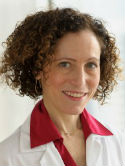Severe acute respiratory syndrome coronavirus 2 surveillance and exposure in the perioperative setting with universal testing and personal protective equipment policies Journal Article
| Authors: | Aslam, A.; Singh, J.; Robilotti, E.; Chow, K.; Bist, T.; Reidy-Lagunes, D.; Shah, M.; Korenstein, D.; Babady, N. E.; Kamboj, M. |
| Article Title: | Severe acute respiratory syndrome coronavirus 2 surveillance and exposure in the perioperative setting with universal testing and personal protective equipment policies |
| Abstract: | Background. New York City (NYC) experienced a surge of coronavirus disease 2019 (COVID-19) cases in March and April 2020. Since then, universal polymerase chain reaction (PCR)-based surveillance testing and personal protective equipment (PPE) measures are in wide use in procedural settings. There is limited published experience on the utility and sustainability of PCR-based surveillance testing in areas with receding and consistently low community COVID-19 rates. Methods. The study was conducted at a tertiary care cancer center in NYC from 22 March to 22 August 2020. Asymptomatic patients underwent severe acute respiratory syndrome coronavirus 2 (SARS-CoV-2) testing before surgeries, interventional radiology procedures, and endoscopy. Contact tracing in procedural areas was done if a patient with an initial negative screen retested positive within 48 hours of the procedure. Results. From March 22 until August 22, 2020, 11 540 unique patients underwent 14 233 tests before surgeries or procedures at Memorial Sloan Kettering Cancer Center. Overall, 65 patients were positive, with a peak rate of 4.3% that fell below 0.3% after April 2020. Among the 65 positive cases, 3 were presymptomatic and 38 were asymptomatic. Among asymptomatic test-positive patients, 76% had PCR cycle threshold >30 at first detection. Five patients tested newly positive in the immediate postoperative period, exposing 82 employees with 1 case of probable transmission (1.2%). Conclusions. The prevalence of SARS-CoV-2 infection identified on preprocedural surveillance was low in our study, which was conducted in an area with limited community spread at the later stage of the study. Universal PPE is protective in procedural settings. Optimal and flexible diagnostic strategies are needed to accomplish and sustain the goals of comprehensive preprocedure surveillance testing. |
| Keywords: | surgery; surveillance; county; covid-19; sars-cov-2 |
| Journal Title: | Clinical Infectious Diseases |
| Volume: | 73 |
| Issue: | 9 |
| ISSN: | 1058-4838 |
| Publisher: | Oxford University Press |
| Date Published: | 2021-11-01 |
| Start Page: | e3013 |
| End Page: | e3018 |
| Language: | English |
| ACCESSION: | WOS:000720749600106 |
| DOI: | 10.1093/cid/ciaa1607 |
| PROVIDER: | wos |
| PMCID: | PMC7665395 |
| PUBMED: | 33090210 |
| Notes: | Article -- Source: Wos |
Altmetric
Citation Impact
BMJ Impact Analytics
MSK Authors
Related MSK Work











